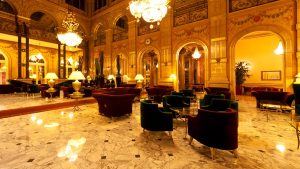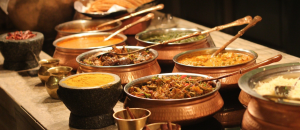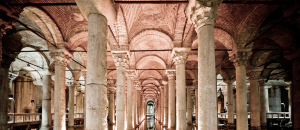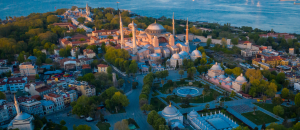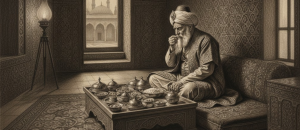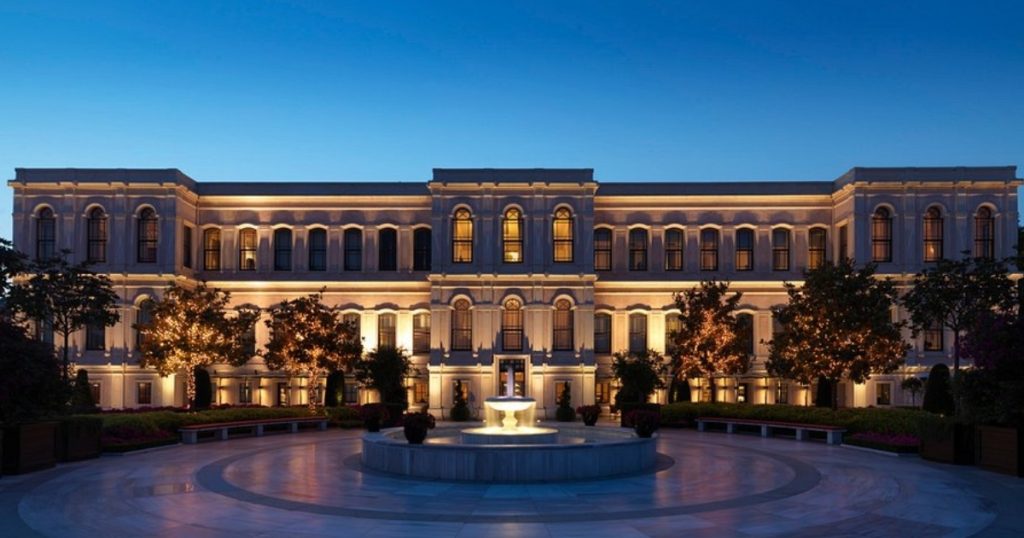The Ottoman Empire solidified its dominion, which spanned three continents, not only with the might of its armies but also with the refined and overwhelming art of diplomacy. The most magnificent stage for this art was undoubtedly the ambassadorial reception ceremonies held at Topkapi Palace. From the Venetian Doge to the French King, from the Austrian Emperor to the Shah of Iran, representatives of the world’s most powerful rulers, upon stepping through the gates of this palace, would find themselves not merely in a diplomatic meeting but within a meticulously orchestrated display of power. Ambassadorial reception ceremonies in the Ottoman Empire were psychological masterpieces that etched the empire’s wealth, military discipline, and the sultan’s absolute authority into the minds of their counterparts without the need for words. These ceremonies were the empire’s window to the world, and those who gazed through this window beheld an unshakeable power.
The First Step of a Power Display: The Ambassador’s Entry into Istanbul and Reception
The process of receiving foreign ambassadors began long before they even set foot in Istanbul. All expenses for the ambassador’s journey from the border to the capital were covered by the Ottoman State, and officials called “Mihmandar” were assigned to accompany them. To greet the ambassador, high-ranking officials, usually led by the Çavuşbaşı, and a Janissary unit were assigned. However, the real spectacle began with the ambassador’s procession into the city.
The ambassador and their delegation were escorted in a magnificent procession through the city’s busiest streets to the “Elçi Hanı” (Ambassador’s Inn), which was usually located in Pera and assigned to them. During this parade, they would advance amidst the curious glances of Janissaries and the public lined on both sides of the streets. The purpose of this procession was twofold: on one hand, it represented the importance given to the guest and a “welcome” gesture, while on the other, it aimed to engrave into the ambassador’s memory, from the very first moment, the empire’s order, the capital’s splendor, and most importantly, the presence of its disciplined soldiers. This was a silent yet effective initial presentation of power and order.
The Feast at Divan-ı Hümayun: The Ulûfe Ceremony as a Display of Military Might
The day the ambassador was to appear before the sultan witnessed one of the most overwhelming scenes of Ottoman diplomatic protocol. When the ambassador was brought to the second courtyard of Topkapi Palace, namely the Divan Square, they would be met with the sight of thousands of Janissary soldiers awaiting in absolute silence. This was no coincidence. The ambassador’s reception day was usually arranged to coincide with the day when the “ulûfe,” the quarterly pay for the Janissaries, was distributed.
The ulûfe divanı ceremony was a psychological weapon designed to leave an indelible impression on the mind of a foreign ambassador. Thousands of elite soldiers moving in complete obedience and discipline, without uttering a single whisper as they took the money pouches placed before them, was the most concrete demonstration of the empire’s military strength and financial capacity. This scene conveyed the message to the ambassador: “The army you would dare to fight, this is that army.” Immediately following this military display, the ambassador and their entourage were invited to a magnificent feast at the Divan-ı Hümayun, hosted by the Grand Vizier. Delicious meals served on silver trays, cushions covered with valuable fabrics, and impeccable service were a second act, showcasing the empire’s wealth and civilized refinement after the military power display. This feast at the Divan-ı Hümayun was as much a display of generosity as it was a declaration of hierarchy; the ambassador dined not with the sultan, but with his representative.
The Path to the Audience Chamber (Arz Odası): Strict Protocol and Ceremonial Procession
Following the feast, the most important moment of the ambassador’s journey, the audience with the sultan, would commence. This journey was a procession, with every step governed by strict protocol rules, extending from the Divan Square to Bâbüssaâde (the Gate of Felicity) and from there to the Arz Odası (Audience Chamber). The ambassador and their entourage would be dressed in “hil’at,” valuable robes made of rich fabrics, as a favor from the sultan. This was, on one hand, a gesture of honor, and on the other, a symbolic act of “enveloping” the ambassador with the fabric of the sultan’s authority.
As they proceeded towards Bâbüssaâde, palace guards called “Kapıcılar” (Gatekeepers) and “Solaklar” (Left-Handed Guards) stood on both sides of the path, holding silver and gold staffs, motionless and silent like statues. This absolute silence and stillness emphasized discipline and absolute obedience to the sultan. As they approached the Arz Odası, the ambassador would usually be taken by the arm by two kapıcılar and escorted into the sultan’s presence in this manner. While presented as an escort out of respect, this action also served as a clear control mechanism to prevent any sudden or disrespectful movement towards the sultan. Every step was part of the display of power in the Ottoman Empire.
In the Presence of the Sultan: Presentation of Diplomatic Messages and Gifts
The audience with the sultan in the Arz Odası was the culmination and the shortest part of the entire ceremony. Upon entering, the ambassador would encounter the sultan seated on a magnificent throne, adorned in jewel-encrusted robes, motionless like a statue, revealing no emotions. The sultan was the embodiment of the state; an institutional, not a personal, entity. He usually uttered not a single word; all communication was conducted through the Grand Vizier.
The ambassador would be brought closer to present the letter they brought and their ruler’s gifts, making a brief bow or a prescribed gesture of salutation. They would read their message or convey it verbally. The sultan’s response would again be conveyed to the ambassador by the Grand Vizier. This entire process would last no more than a few minutes. The objective was not so much to conduct diplomatic negotiations as it was to make the recipient feel that the sultan was inaccessible, sublime, and possessed absolute authority. The ambassador would leave the presence feeling that they had met not a person, but the materialized power of an empire.
More Than Just a Ceremony: The Strategic and Diplomatic Importance of Ambassadorial Receptions
In conclusion, ambassadorial reception ceremonies in the Ottoman Empire were not merely diplomatic formalities; they were political theater, strategic communication tools. The fundamental objectives behind this complex and magnificent choreography were as follows:
- Deterrence: To deter potential enemies by showcasing the empire’s military and financial power through scenes like the ulûfe ceremony.
- Prestige: To demonstrate the superiority of the Ottoman dynasty over all other dynasties through the palace’s splendor, the feast’s richness, and the value of the gifts.
- Hierarchy: To emphasize, at every stage of the protocol, the sultan’s absolute and inaccessible authority, and the secondary position of all other rulers compared to him.
- Psychological Impact: To ensure that the ambassador returned to their country not only with a political message but also with an indelible impression of the Ottoman’s overwhelming power.
These ceremonies were declarations of how the Ottoman Empire saw itself in the world and how it wanted the world to see it. Every hil’at, every silent Janissary, and every silver tray carried a diplomatic message more effective than armies.

